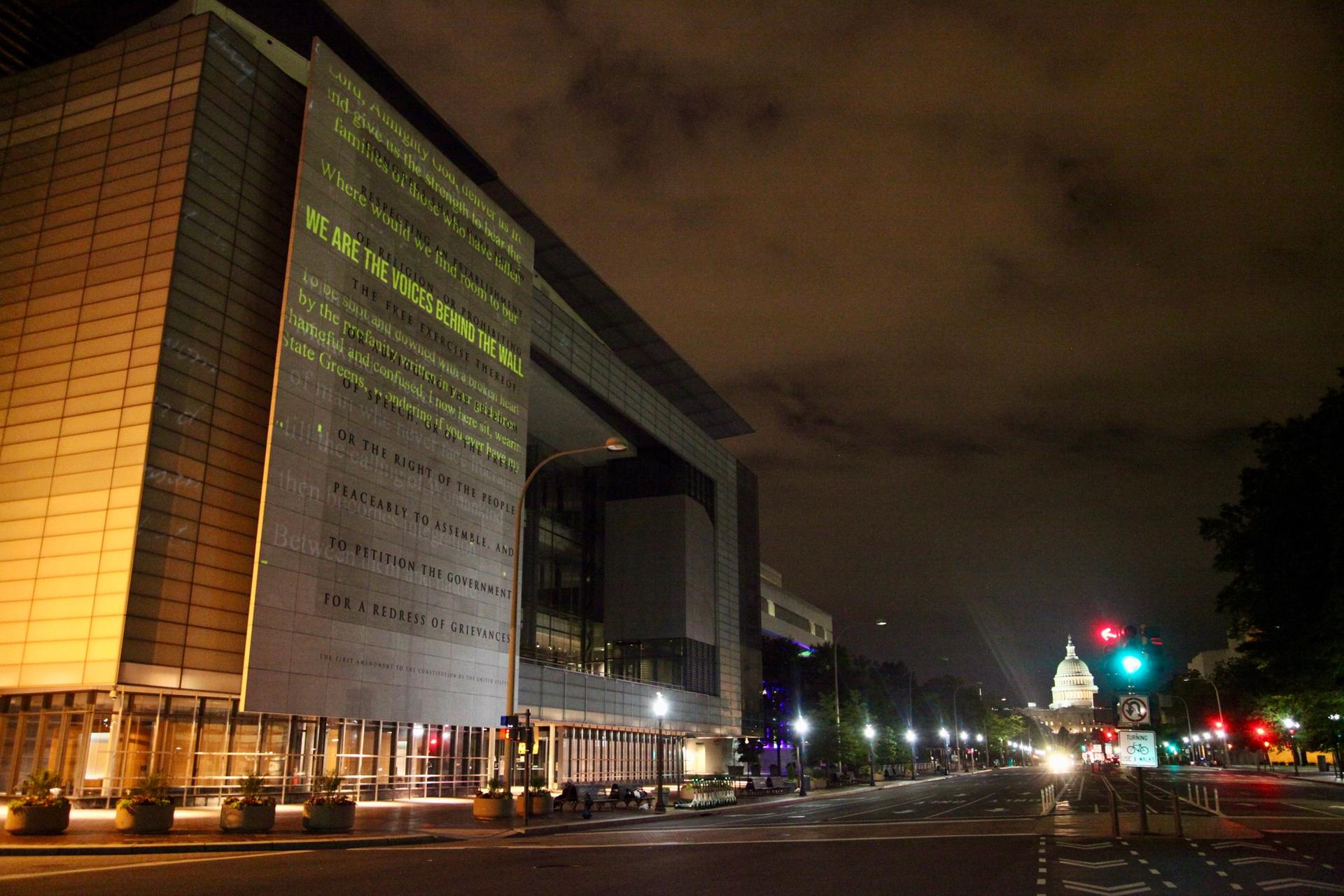Public works of art responding to systemic racism and the unjustified deaths of black people are appearing across the US following the murder of George Floyd at the hands of the white police officer Derek Chauvin, which sparked widespread Black Lives Matter protests. This is especially true in the nation’s capital, where protests have been ongoing for more than two weeks.
The latest work to appear in Washington, DC is a guerilla project by Hank Willis Thomas and several collaborators, which covered the façade of the US Department of Justice building last night with a projection of writings by incarcerated and formerly incarcerated individuals before it was relocated to the Newseum after police arrived. The aim of the intervention was to highlight the impact of the coronavirus pandemic on US prisoners, which disproportionately affects African Americans.
“We see this project as being part of the whole movement happening in this moment, and doing it consistently and constantly is part of the process,” Thomas says of the work The Writing on the Wall, an ongoing series he conceived in 2013 with Dr. Baz Dreisinger, the founder of the Incarceration Nations Network, and her students of the John Jay College of Criminal Justice in New York.
The work, which is often organised guerilla-style as projections on government buildings, consists of more than 2,000 pages of essays, poems, letters, notes and stories by prisoners that Dreisinger collected over five decades. But protests condemning police brutality and calling for the defunding of the police has made the project “especially pertinent as part of all the movement that is building in this moment”, says Dreisinger.
She adds: “This time it was about thinking what public art looks like in the context of a pandemic, and also placing the words of the most vulnerable and most discarded population in the centre of our cities in the midst of the pandemic. It was a priority for us to find a location that speaks to the issue and urgency of the moment.”

Following a police response, Thomas's guerilla installation was moved to the Newseum building. Courtesy of the Incarcerations Nations Network
The location of the work was not revealed prior to the installation, as organisers anticipated that the work could be shut down. The unveiling included a live performance by C.S. Armstrong and was accompanied by a conversation aired on Instagram live between various social justice organisations, including Cure the Streets and the Violence Interruption Program. The work will travel to various other undisclosed locations throughout the US in the coming weeks.
But while these interventionist works raise awareness for the cause against police brutality and efforts to defund the police, some fear that they ultimately do not help effect change.
In another guerilla intervention in Washington, DC last week, protestors painted “Defund the Police” in response to a “Black Lives Matter” street mural DC mayor Muriel Bowser had commissioned the day before. Bowser “wanted to use art to make a statement about the site where peaceful protestors were previously attacked”, John Falcicchio, the chief of staff for the mayor, tells The Art Newspaper, explaining that the work was installed by municipal workers and artists across two blocks near a historic church where Donald Trump cleared a path of protestors with chemical irritants and flash grenades for a photo-op the week prior.
However, the work was quickly criticised by the DC chapter of the Black Lives Matter network and other activists, who called the commission a “performative distraction” from Bowser’s inaction in the movement’s efforts to decrease funding for the police. The mural, and Bowser’s renaming of that particular section of 16th Street to Black Lives Matter Plaza, aims to “appease white liberals while ignoring our demands”, a spokesperson for the movement added. “Black lives matter means defund the police.”
Peter Nesbett, the executive director of the Washington Project for the Arts, says that there was “nothing ‘artful’ about the mural except for its deceit”. He adds, “I’m not sure how effective muralism is as a form anymore when it has been so co-opted by the local governments and corporate America as both a pacifier, and a tool, for gentrification and displacement.”
However, Thomas maintains that the more awareness there is of structural racism and inequality, the better for everyone. “It’s a very fragile and delicate time in our democracy but also a very potent and exciting time for creating productive things,” he says. “And the more works that people do the merrier.”


